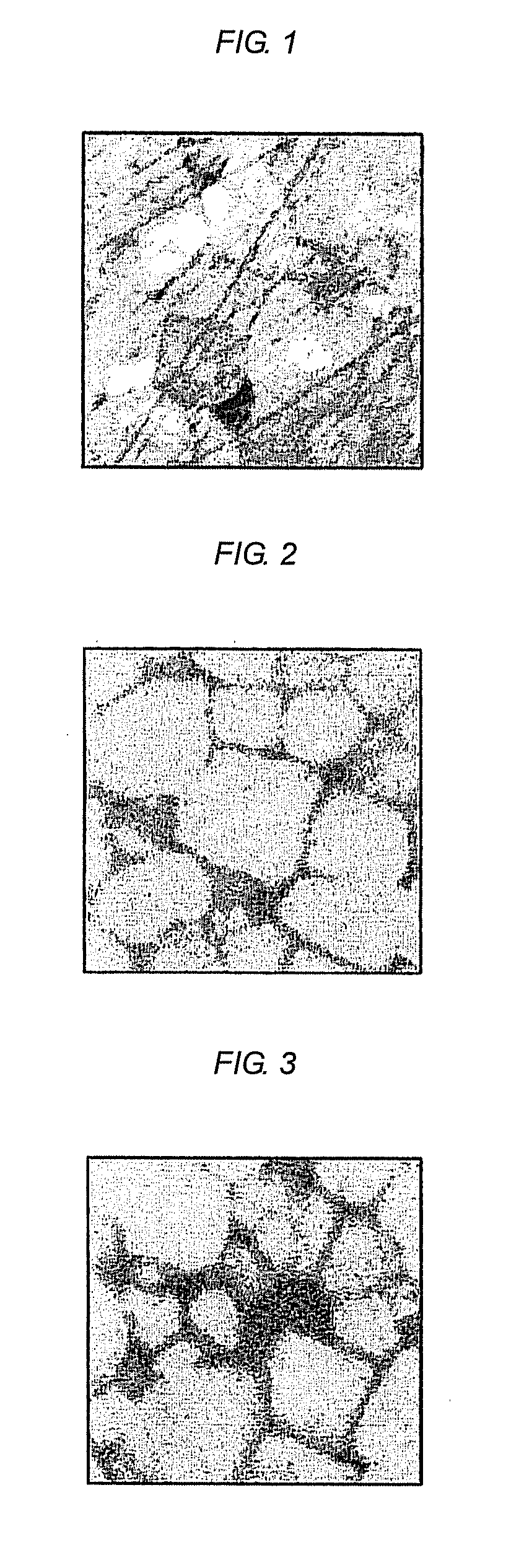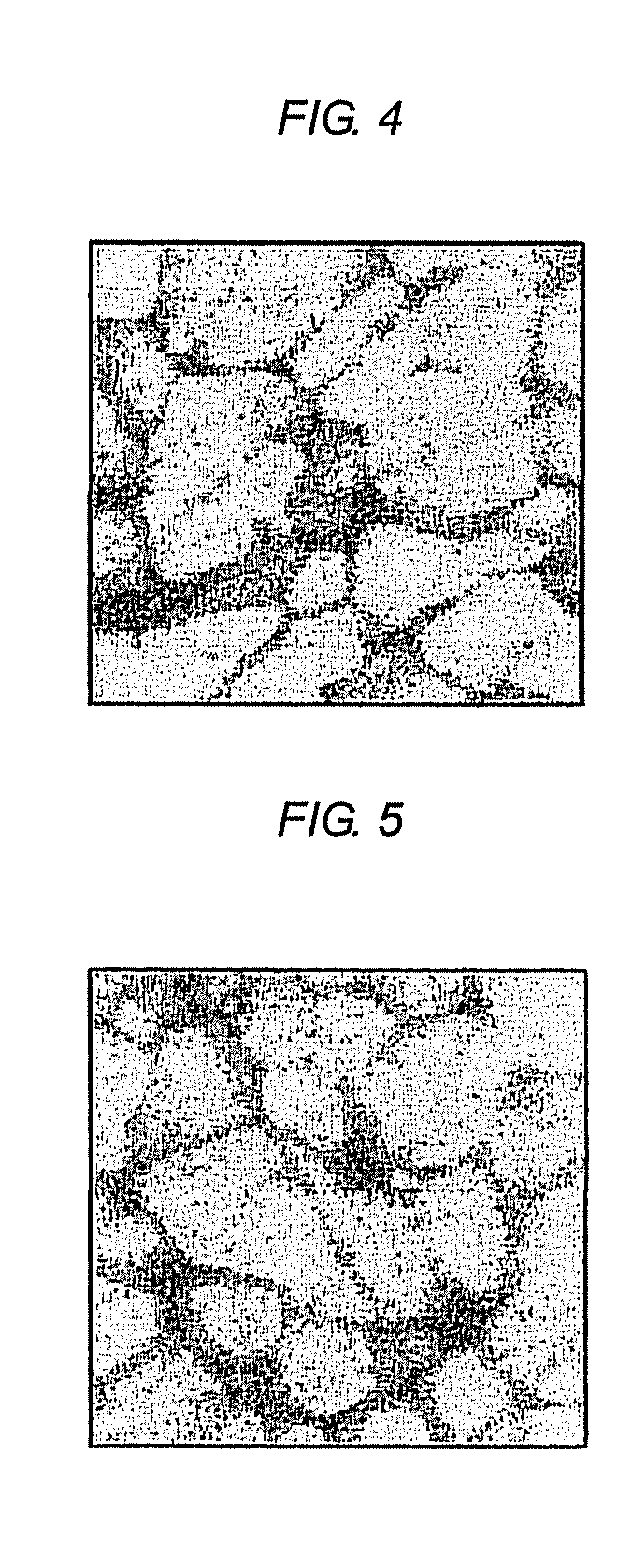Process for producing semiconductive porcelain composition/electrode assembly
a semi-conductive porcelain and composition technology, applied in the field of semi-conductive porcelain composition/electrode assembly production, can solve the problems of difficult application of the composition to a ptc heater, small effect of decreasing room temperature resistivity change, and high production cost, and achieve the effect of reducing the change with the passage of time and low room temperature resistivity
- Summary
- Abstract
- Description
- Claims
- Application Information
AI Technical Summary
Benefits of technology
Problems solved by technology
Method used
Image
Examples
example 1
[0064]A semiconductive porcelain composition was obtained as follows using a residual method. Raw material powders of BaCO3, TiO2 and La2O3 were prepared and blended so as to be (Ba0.994La0.006)TiO3, followed by mixing in pure water. The mixed raw material powder obtained was calcined at 900° C. for 4 hours in the air to prepare a calcined BT powder.
[0065]Raw material powders of Na2CO3, Bi2O3 and TiO2 were prepared and blended so as to be (Bi0.5Na0.5)TiO3, followed by mixing in ethanol. The mixed raw material powder obtained was calcined at 900° C. for 2 hours in the air to prepare a calcined BNT powder.
[0066]The calcined BT powder and the calcined BNT powder prepared above were blended so as to be 73 / 7 in molar ratio. The resultant was mixed and pulverized by a pot mill using pure water as a medium until a central grain size of the mixed calcined powder is from 1.0 μm to 2.0 μm, followed by drying. PVA was added to a pulverized powder of the mixed calcined powder, followed by mixin...
example 18
[0071]Raw material powders of BaCO3, TiO2 and Nb2O3 were prepared and blended so as to be Ba(Ti0.997Nb0.003)O3, followed by mixing in pure water. The mixed raw material powder obtained was calcined at 900° C. for 4 hours in the air to prepare a calcined BT powder.
[0072]Raw material powders of Na2CO3, Bi2O3 and TiO2 were prepared and blended so as to be (Bi0.5Na0.5)TiO3, followed by mixing in ethanol. The mixed raw material powder obtained was calcined at 900° C. for 2 hours in the air to prepare a calcined BNT powder.
[0073]The calcined BT powder and the calcined BNT powder, prepared above were blended so as to be 73 / 7 in molar ratio. The resulting mixture was mixed and pulverized by a pot mill using pure water as a medium until a central grain size of the mixed calcined powder is from 1.0 μm to 2.0 μm, followed by drying. PVA was added to a pulverized powder of the mixed calcined powder, followed by mixing, and the resulting mixture was granulated with a granulator. The granulated p...
PUM
| Property | Measurement | Unit |
|---|---|---|
| temperature | aaaaa | aaaaa |
| Curie temperature | aaaaa | aaaaa |
| temperature | aaaaa | aaaaa |
Abstract
Description
Claims
Application Information
 Login to View More
Login to View More - R&D
- Intellectual Property
- Life Sciences
- Materials
- Tech Scout
- Unparalleled Data Quality
- Higher Quality Content
- 60% Fewer Hallucinations
Browse by: Latest US Patents, China's latest patents, Technical Efficacy Thesaurus, Application Domain, Technology Topic, Popular Technical Reports.
© 2025 PatSnap. All rights reserved.Legal|Privacy policy|Modern Slavery Act Transparency Statement|Sitemap|About US| Contact US: help@patsnap.com



